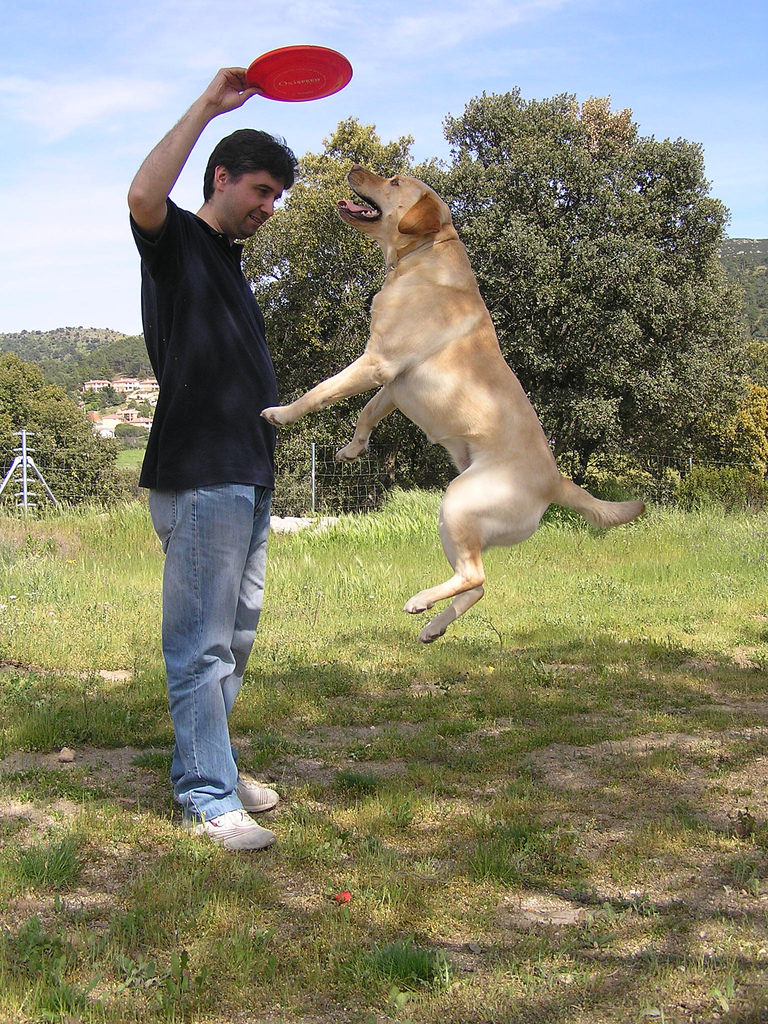It’s no secret Labrador Retrievers love people, food and toys. In fact, Labs can get downright excited and even crazy over all of these things. When that happens, their manners tend to go out the window, unless they have been carefully trained.
These are the Labs that jump all over you for anything they want. Not only is this behavior a nuisance, it can cause injury – especially to young children or seniors. So how do you get your Lab to not jump up even when excited? It may seem like a big task, but if you know some canine psychology, it’s actually pretty easy. The hardest part? Getting humans to follow your rules! Check out this easy way to get your Lab to stop jumping on people.

Why Your Lab Jumps On People
Dogs are opportunistic creatures. This means if they can do something to get what they want, they will. And then that behavior will be reinforced and they will be more likely to do it again. So unless your Labrador is jumping on people out of fear or aggression (in which case you should seek a professional dog trainer for help), he is doing it because it gets him what he wants – attention, a toy, food, etc. The good news is that this makes it easy to stop the behavior. All you have to do is make sure your Lab is not being rewarded for it. Then, give him another behavior to do instead that is rewarded. Problem solved.
3 Steps To Getting Your Lab To Not Jump On People

#1 – Stop Rewarding The Jumping
Every time your Lab jumps on someone, that person needs to ignore him completely. The best thing to do is turn around and walk away. Even if they shout “down,” “no,” and/or push him away – negative attention is still attention. The trick is that every single person, 100 percent of the time, needs to do this. One person saying, “Oh, I don’t mind” and then giving your dog what he wants will make the behavior stronger. So insist upon your rules. If you are working with an older dog, this can be difficult due to their size. It’s best to keep a leash on your Lab, so you can gain control.
#2 – Ask For A Conflicting Behavior
Most people ask for a “sit.” Your Lab can’t Sit and jump up at the same time. Then reward for the “sit” by giving your dog whatever he wanted. This can be petting, a toy, a treat, even his food dish! Anything your Labrador normally jumps up on you for, he now only gets if he is sitting. If your Lab has hip issues, opt for a calm and still “four on the floor.” You will wait until your Lab is standing quietly and then reward. This takes some training and patience, but it will work because, as mentioned above, dogs repeat behaviors that get them what they want. For some really excited young Labs, you may find a “down” works better because it’s harder for them to “spring up” from a down position.
#3 – Management
This is the last piece of the puzzle and it’s what you have to do while your Lab is learning to sit for things, which won’t happen overnight. As mentioned above, strength can be an issue if you are working with an adult Lab, so keeping him on a leash can help. It’s also a useful tool for when you meet that pesky person that lets (or worse, encourages!) your Lab to jump, or you are in a situation that is just too exciting for him to remember his manners. In these cases, you need to manage the behavior. If your Lab is wearing a leash, you can walk him away, step on it to prevent him from jumping, and/or put him in a different room to calm down and try again in a bit.

